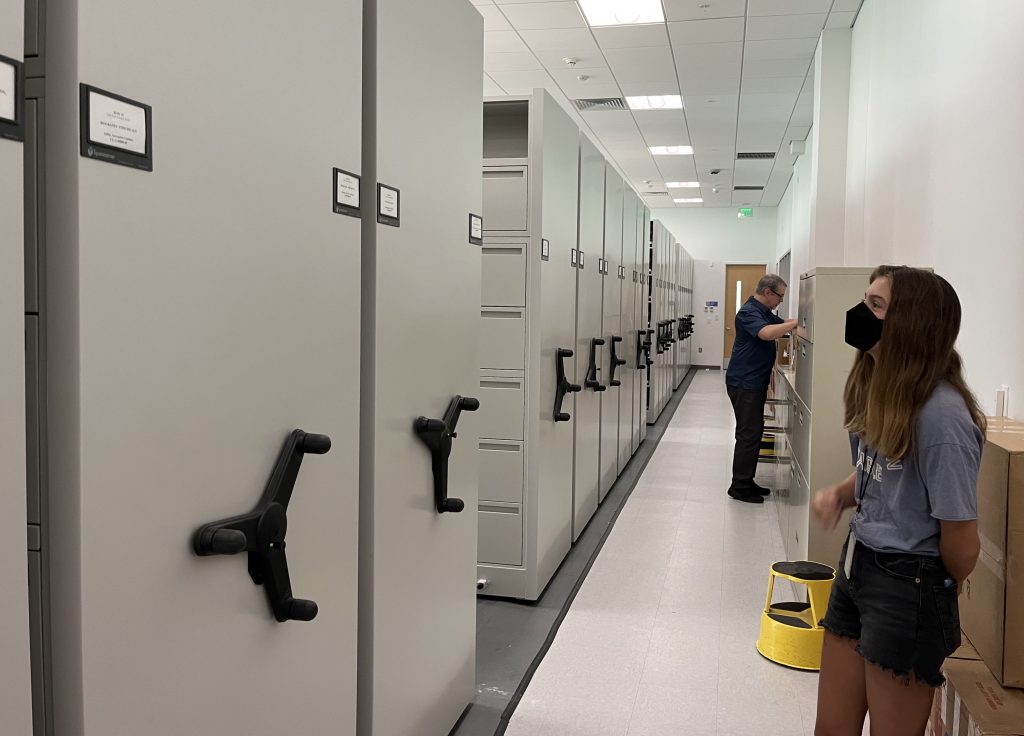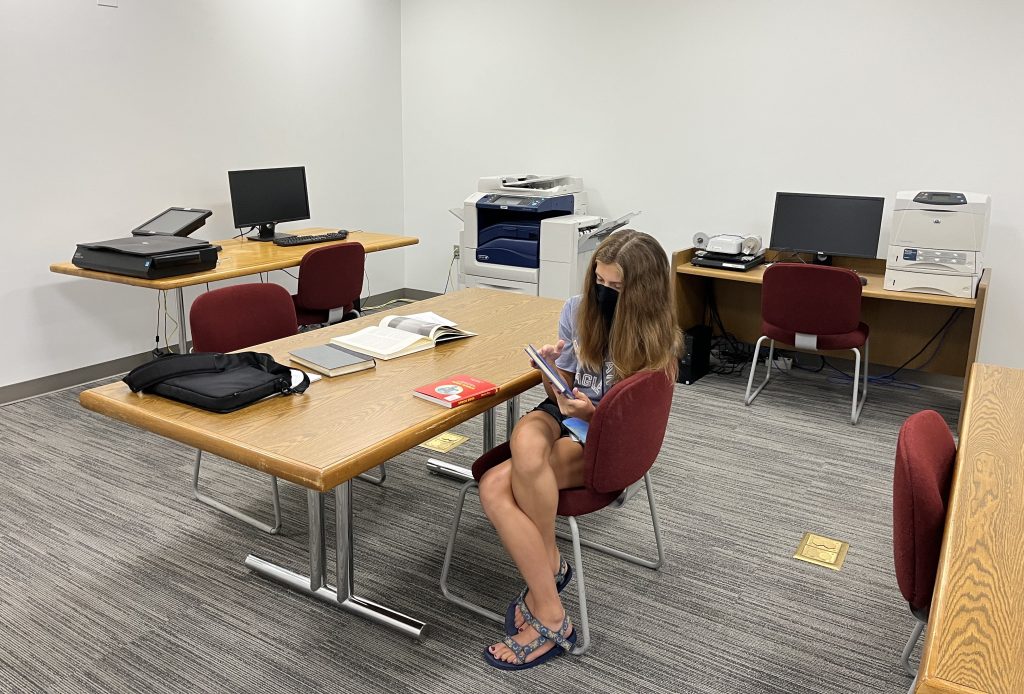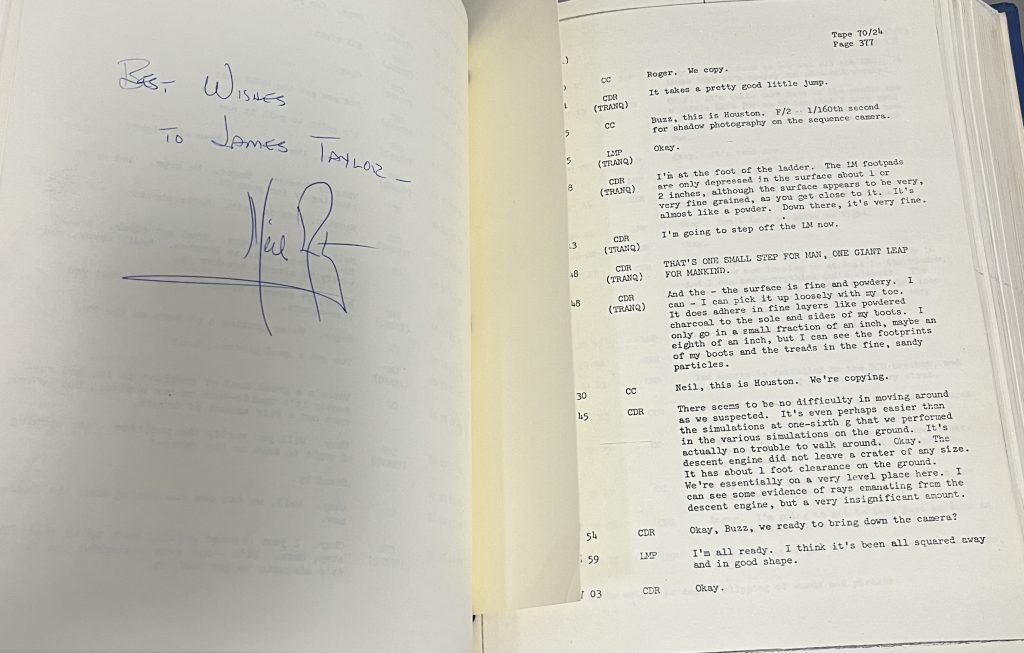Digital Access
I visited the National Air and Space museum library at the Udvar-Hazy Museum in Chantilly, VA. This is part of the Smithsonian Institute. The website indicates that access is available to researchers by appointment only. I called and explained our project and was able to get a last minute appointment due to a cancellation. The main website is here:
https://library.si.edu/libraries/air-and-space . In order to get full benefit from this visit, I decided to do some mock research, and I cleared the way to bring my 13 year old as my research assistant. We spent quite a bit of time before the visit looking over the library catalog. Before going, we found information in the catalog https://library.si.edu/research that we wanted to access.
Physical Space and People
When we arrived, we parked in the main lot, went through the front doors to the museum and were directed through security to receive a visitor badge and give our personal information. Security then called the librarian to escort us. This took well over 20 minutes. Once the librarian arrived to escort us, he was extremely apologetic for the wait, and then gave us an incredible tour.
The library is located on the upper level of the museum, down the hallway from the cafeteria. The area requires badge access. Mr. Cottrill explained that they requested a secure space when they built the library, and they received one. Every door from the main access door on requires badge access. He has to badge in 3 times to get into or out of his office (personal communication, July, 20, 2022).
The library itself is a series of small rooms. The public only technically has access to the reading room. The librarians are supposed to get any material requests for you. However, because Mr. Cottrill felt bad about our wait, he led us back into the stacks. Their files are all on compact shelving. He found the shelves we were looking for and allowed us to find the books we wanted to access. He then pointed out a few more of interest for my daughter and pulled those as well. We then walked back into his office, which has piles of donated materials as well as materials that have been returned from interlibrary loans and need to be returned to the shelves.


Across the hallway is the rare book collection currently housing the Ramsey Rare Book Collection as well as other precious items.
While the website indicates there are four staff members, there was one on the day we were there. One more is an older gentleman that only comes in part time, one is the archivist and is in a different area, and one more was on vacation. There were no other patrons while we were there.
Collections
The website indicates that there are 40,000 volumes in the Air and Space library. The majority of the materials in the collection are on aeronautics, space, and CEPS (center for earth and planetary studies). They have everything from pre-flight information to balloons to the training manuals on the most recent aircraft. They are digitizing what they can. As Rubin and Rubin discussed, digitization would greatly increase user interaction with the material while preserving fragile documents (2020), but the library is running up against multiple hurdles, from copyright laws to staffing issues. Mr. Cotrill expressed excitement that the Charles Lindburg files will soon fall out of copyright so that they can begin to digitize many of them.
Mr. Cottrill was especially eager to show us some of their rare documents. We saw a memorial album of Charles Lindburg’s flight over the Atlantic that was made by Vacuum Oil Company. Only 13 of the albums were ever produced and one of those was presented to Charles Lindburg himself.
We also saw the air to ground voice transmission transcript of the Apollo 11 moon landing. This particular volume had been collected by a college student who was fascinated by the landing. He couldn’t afford a copy of the transcript, so he called around until he was able to find someone willing to give him the transmission log. He then tracked down the three astronauts from the flight and had them sign it. Neil Armstrong was notoriously anti-publicity, and only agreed to sign the document after meeting with Mr. Taylor to see that he was a space enthusiast who wanted the book for his personal collection and wasn’t planning to sell the item. The museum acquired the signed log directly from Mr. Taylor in the 90s and it is kept in the rare book collections (C. Cottrill, personal communication, July 20, 2022).

Services
This library mainly serves SI staff and volunteers, but they also accommodate outside researchers. The earliest appointment I could get was over a week from my call, and that was only available due to a cancellation. They are full service while you are there, with a lot of hands on help from the librarian. From a diversity standpoint the full service would make it very accessible for almost everyone. They have microfiche machines, a copier, computers and a document scanner for use. Researchers are welcome to digitally save anything they need, but need to purchase the storage data from the library to prevent viruses on their computers.
Overall Thoughts
This visit was fascinating. We went only to see the library but received a personal tour. Mr. Cottrill spent a lot of time explaining his work and their library, and we got an amazing insider’s perspective of what it is like to work in a special library. Because this is the Smithsonian, they receive vast numbers of donations. A lot of his job is deciding what needs to be kept, what should be archived, and what is worth keeping but not on site. On the day we were there, a collection had just come from a female UPS pilot, there was a yet to be sorted collection from NASA astronaut Carruthers, and there was a pile of rejected materials from the private collection of astronomer Helen Hogg that was heading to another library. The sheer amount of material they need to sort to find historically relavent pieces is overwhelming but really exciting.
Reference
Rubin, R. E., & Rubin, R. G. (2020). Foundations of library and information science (5th ed.). ALA Neal-Schuman.
This is so awesome! I’m a sucker for both archives and air/space museums, so this is an amazing combination. I’m a bit sad that the public cannot usually access the archives, but the reading room looks nice. The visual aids are fantastic and I’m so glad you included the transcript from the moon landing. Sorry you had to wait a long time for your tour, but it sounds like it was worth the wait. Thanks for sharing!
This sounds like an amazing experience! Seeing the memorial album of Charles Lindburg’s flight over the Atlantic and the air to ground voice transmission transcript of the Apollo 11 moon landing firsthand must have been exciting. Mr. Cottrill was very accommodating and helpful.
The task of sorting through materials for historical relevance sounds incredibly taxing but also incredibly satisfying. I think it’s so awesome that your daughter got to experience this visit with you.
What an amazing experience! I love that you took your daughter along. It must have been really exciting to see the Apollo transcript!
This is amazing! What an experience! I love continuing to be surprised finding out about these archives. 40,000 volumes is huge! The story about the student who loved space so much and went to such effort is an incredible cultural item beyond value to their collection.
Wow, it sounds like such a cool experience. It was kind of Mr. Cottrill to give you a personal tour of the library. It sounds like they stay pretty booked up with appointments. I love that you were able to see the Apollo 11 moon landing transcript. What a cool introduction to special libraries.